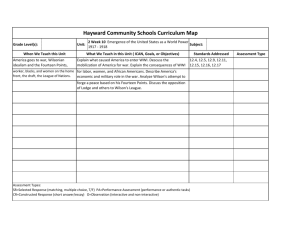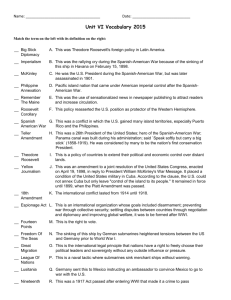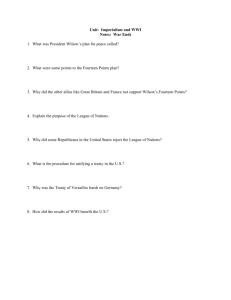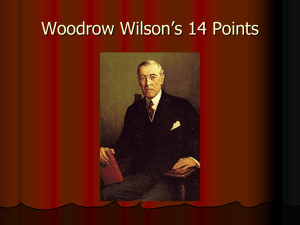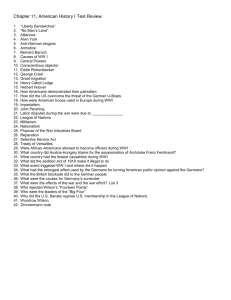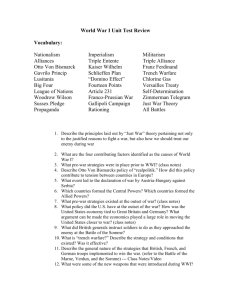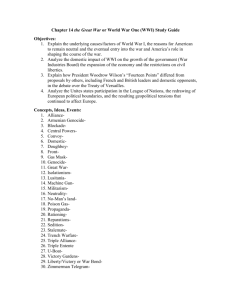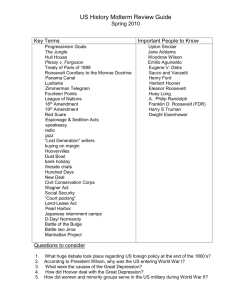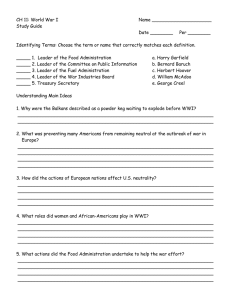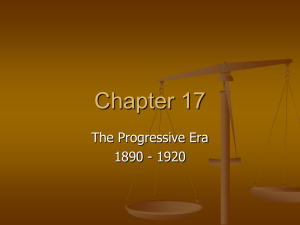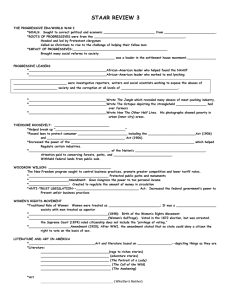Unit 4 Study Guide
advertisement
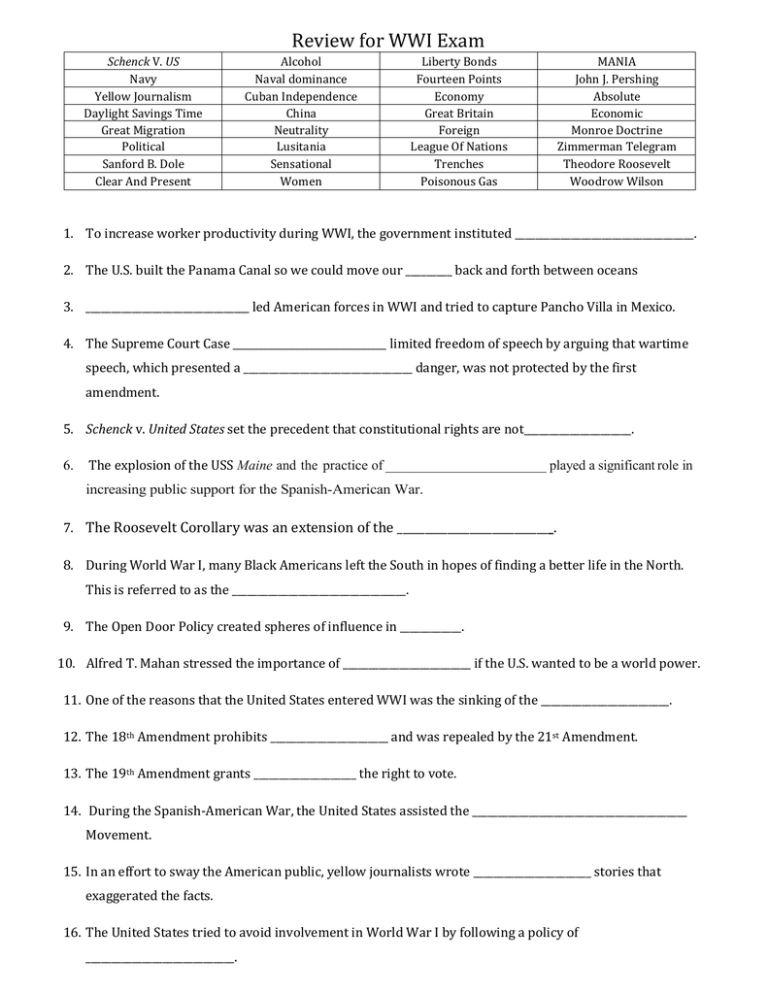
Review for WWI Exam Schenck V. US Navy Yellow Journalism Daylight Savings Time Great Migration Political Sanford B. Dole Clear And Present Alcohol Naval dominance Cuban Independence China Neutrality Lusitania Sensational Women Liberty Bonds Fourteen Points Economy Great Britain Foreign League Of Nations Trenches Poisonous Gas MANIA John J. Pershing Absolute Economic Monroe Doctrine Zimmerman Telegram Theodore Roosevelt Woodrow Wilson 1. To increase worker productivity during WWI, the government instituted ___________________________________. 2. The U.S. built the Panama Canal so we could move our _________ back and forth between oceans 3. ________________________________ led American forces in WWI and tried to capture Pancho Villa in Mexico. 4. The Supreme Court Case ______________________________ limited freedom of speech by arguing that wartime speech, which presented a _________________________________ danger, was not protected by the first amendment. 5. Schenck v. United States set the precedent that constitutional rights are not_____________________. 6. The explosion of the USS Maine and the practice of _________________________ played a significant role in increasing public support for the Spanish-American War. 7. The Roosevelt Corollary was an extension of the ____________________________. 8. During World War I, many Black Americans left the South in hopes of finding a better life in the North. This is referred to as the __________________________________. 9. The Open Door Policy created spheres of influence in ____________. 10. Alfred T. Mahan stressed the importance of _________________________ if the U.S. wanted to be a world power. 11. One of the reasons that the United States entered WWI was the sinking of the _________________________. 12. The 18th Amendment prohibits _______________________ and was repealed by the 21st Amendment. 13. The 19th Amendment grants ____________________ the right to vote. 14. During the Spanish-American War, the United States assisted the __________________________________________ Movement. 15. In an effort to sway the American public, yellow journalists wrote _______________________ stories that exaggerated the facts. 16. The United States tried to avoid involvement in World War I by following a policy of _____________________________. 17. Political and economic ties to ___________________________ led the United States to support the Allies in World War I. 18. In his ______________________________, Woodrow Wilson proposed the establishment of the League of Nations. 19. The United States never joined the ___________________________________________. 20. The United States government used propaganda during the war to encourage citizens to purchase ____________________________________. 21. Tanks, machine guns and ________________________, were new weapons' technology created during the Industrial Revolution that caused an enormous amount of death and destruction. 22. Woodrow Wilson used his wartime powers to increase government control of the _______________________. 23. Soldiers fought from ______________________ during World War I along the Western Front. 24. Afraid that membership in the League of Nations would draw the United States into ______________________ conflict, the country never joined the organization. 25. The policies of both President Roosevelt and Taft towards Latin America was to protect American ______________________ and __________________________ interests. 26. In the ___________________________________, Germany offered Mexico parts of the United States in return for military assistance. 27. The acronym ______________________ summarizes why World War I began. It stands for militarism, alliances, nationalism, imperialism, and assassination of Archduke Franz Ferdinand. 28. President _______________________ outlined postwar objectives for the United States in his Fourteen Points. 29. _____________________________ took control of the Hawaiian Islands after Queen Lil was overthrown by American businessmen. 30. ______________________________ used the "Big Stick" policy to force or intimidate the European powers from staying out of Latin America and Opening the Far East to American business interests.
